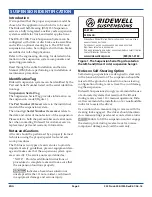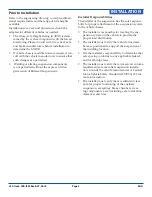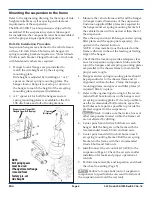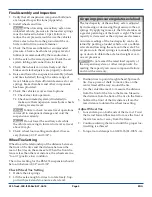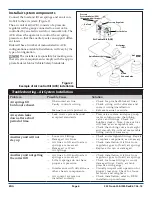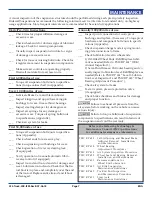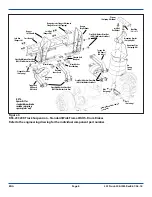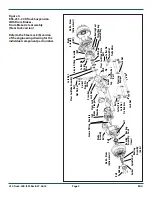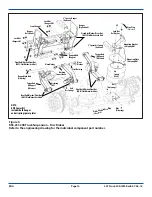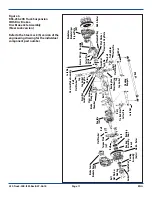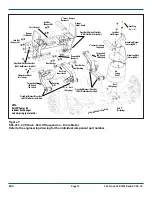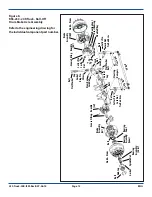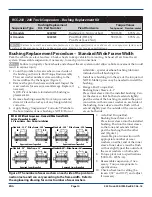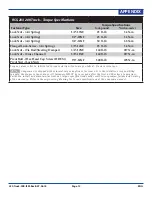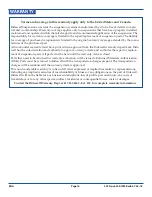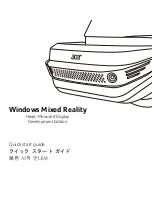
ENG
Page 6
233-Truck-20K-ISM-RevB-07-06-18
Troubleshooting – Air System Installation
Problem
Possible Cause
Solution
Air springs fill
but do not exhaust.
— Obstructed air line.
— Faulty controls wiring.
— Manual override pushed in
— Check for pinched/blocked lines.
— Check wiring with voltmeter and
correct wiring/installation.
— Release manual override.
Air system leaks
down after a short
period of time.
— Leak in air system beyond
accepted standards.
— Pressurize system and spray soap
water solution onto the tubing,
valves and fittings. Check for
bubbles (leaks). Note: Some valves
will leak at an acceptable rate.
— Check that tubing cuts are straight
and smooth. Re-cut and reassemble
fitting joints, if necessary.
Auxiliary unit will not
stay up
— Loose Air Fittings.
— Damaged Air Lines.
— Air lines to lift and load air
springs are reversed.
— Damaged or Worn
Air Springs.
— Check and retighten fittings. Repair
or replace component, as necessary.
— Check installation. Air line from
regulator goes to (load) air springs.
— Replace if worn or damaged.
Auxiliary unit not getting
the correct lift
— Air lines to lift and load air
springs are reversed.
— Lift air springs do not have
proper air pressure.
— Interference with driveline or
other chassis components.
— Air control system not
installed correctly.
— Check installation. Air line from
regulator goes to (load) air springs.
— Check for loose fittings or worn/
damaged lines. Verify air tank
pressure with gauge.
— Visually inspect unit operation for
proper clearance. Check for loose
fasteners and retighten.
— Check installation; refer to OEM
installation procedures.
Install air system components
Connect the load and lift air springs and an air con-
trol kit to the air system (Figure 2).
The air control kit (ACK) consists of a pressure
regulator with a gauge connected to an air valve
controlled by an electric switch or manual knob. The
ACK allows the operator to control the air spring
pressure so that the auxiliary axle can support differ
-
ent loads.
Ridewell has a number of manual/electric ACK
configurations available. Installation will vary by the
type of configuration.
The installer is responsible for making sure
that air system requirements comply with the appro-
priate Federal Motor Vehicle Safety Standards.
Air Tank
Air Control Kit (ACK)
Quick Exhaust Valve
Air Springs
(Load)
Quick
Exhaust Valve
Air Springs
(Lift)
Pressure Regulator
Pressure
Protection Valve (PPV)
(Required with air brakes)
Electric Valve
Figure 2.
Example of Air Control Kit (ACK) installation


